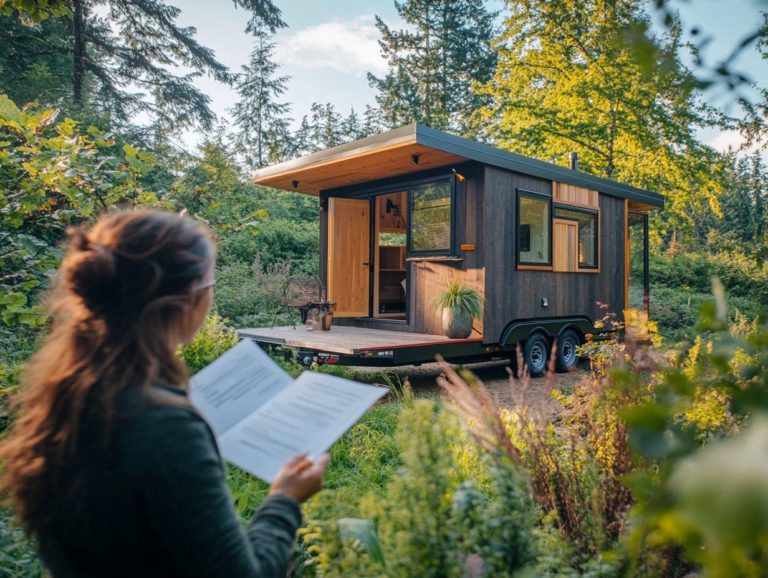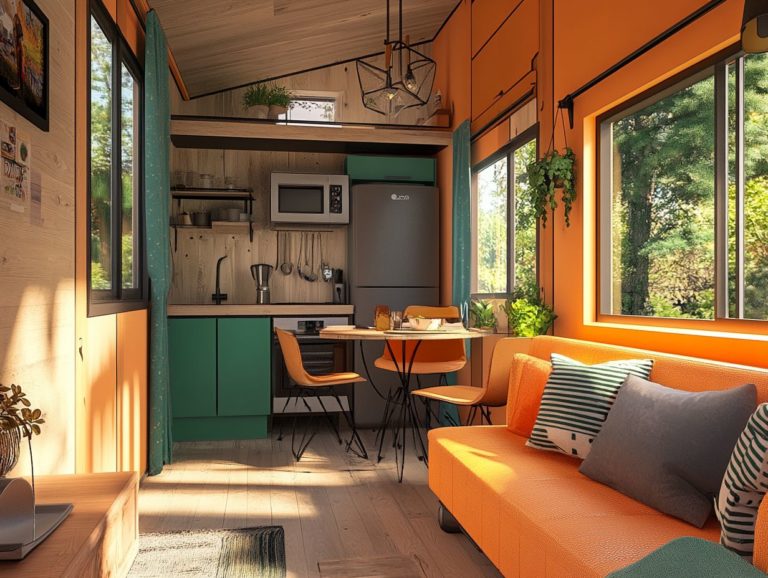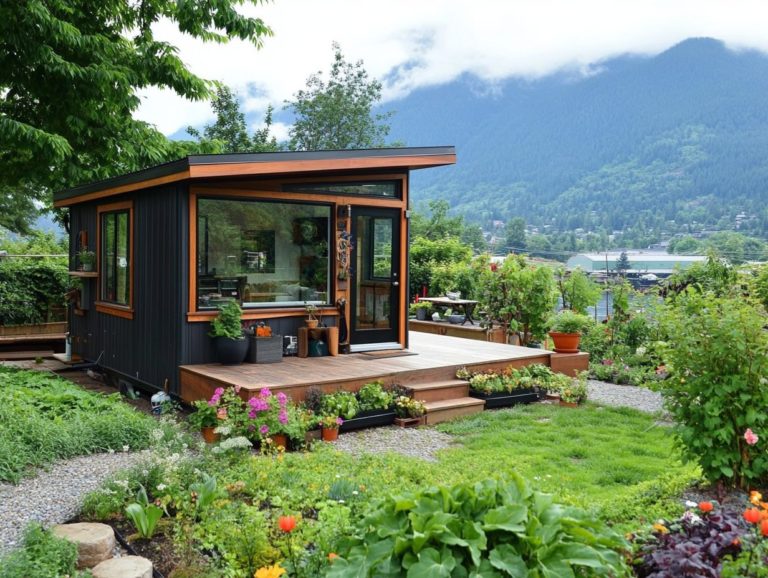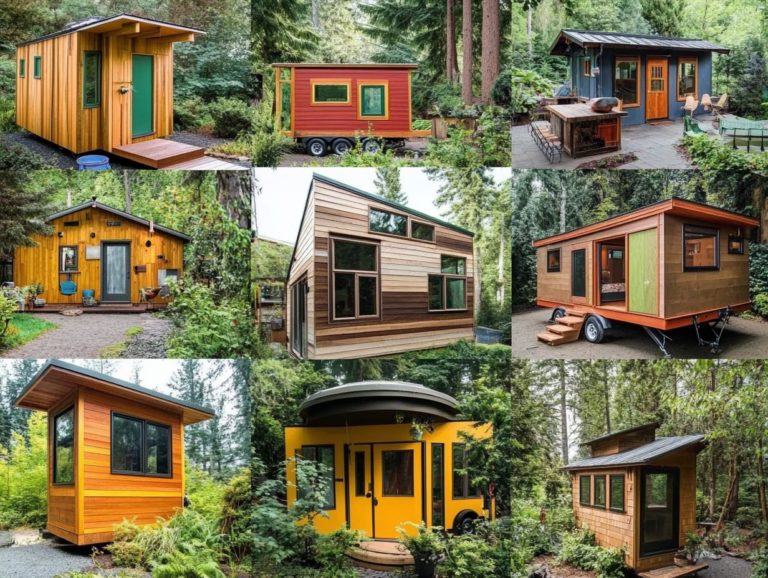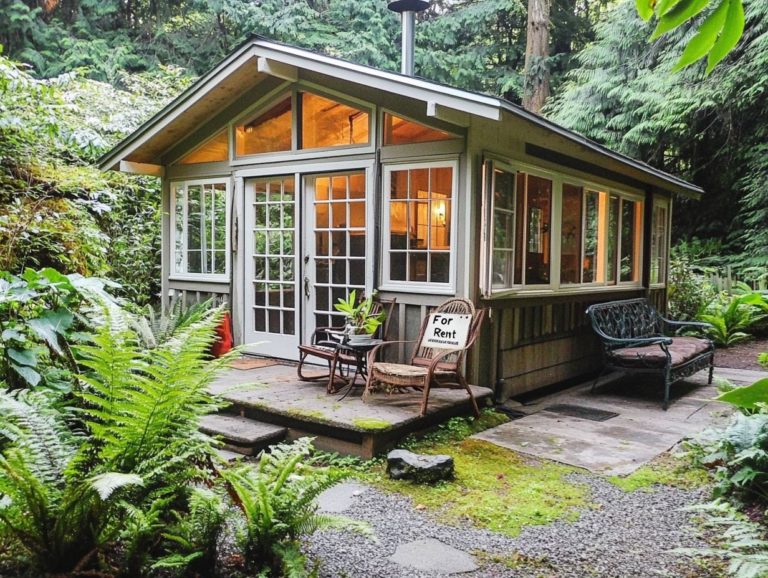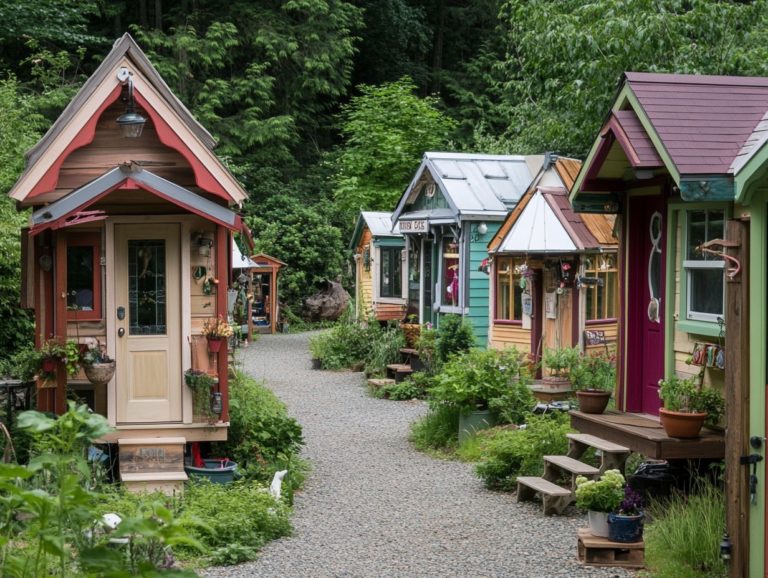What Is the Best Location for a Tiny House?
The tiny house movement is gaining momentum. Choosing the perfect location for your compact living space is essential.
Local zoning laws and climate affect your tiny house experience. Access to utilities is also crucial. Whether you re considering a peaceful rural retreat or an urban setup, this guide helps you navigate key elements to find your ideal spot.
With insights on researching regulations and ensuring lifestyle compatibility, you ll be ready to discover your dream location!
Contents
- Key Takeaways:
- Factors to Consider When Choosing a Location
- Popular Locations for Tiny Homes
- Tips for Finding the Perfect Location
- Frequently Asked Questions
- What is the best location for a tiny house?
- Can I park my tiny house on a residential property?
- What are the zoning laws and regulations for tiny houses?
- Is it possible to have a tiny house in an urban area?
- What are the pros and cons of living in a tiny house in a rural area?
- Can I have a tiny house on wheels in a tiny house community?
Key Takeaways:
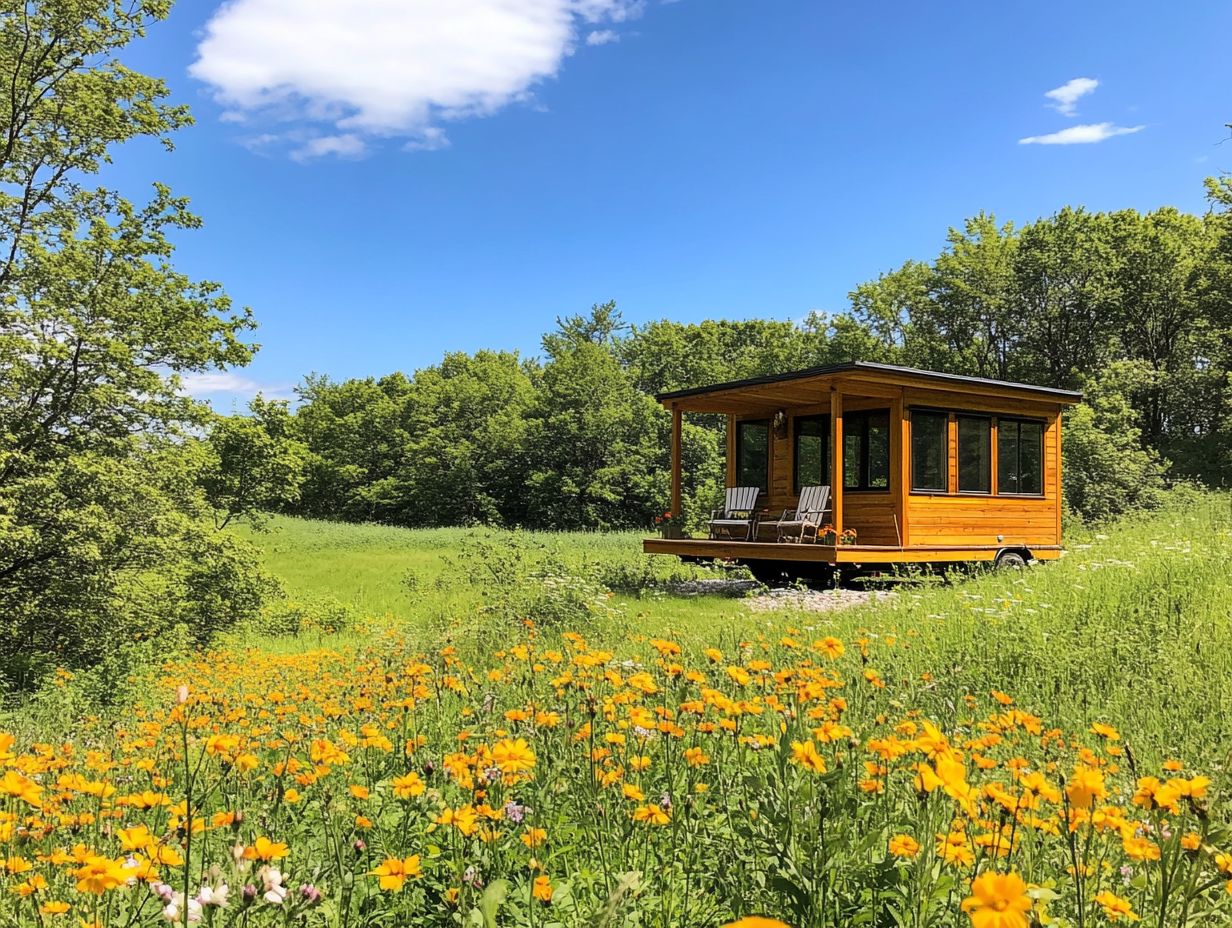
- Research local zoning and building codes to ensure legality and avoid potential issues.
- Consider the location’s climate and how it may impact your lifestyle and home build.
- Decide between rural or urban areas and think about off-grid living for a sustainable option.
What Are Tiny Houses?
Tiny houses are compact living spaces, typically measuring less than 400 square feet. They offer you a refreshing alternative lifestyle that emphasizes minimalism, sustainability, and affordability.
With tiny house living, you can downsize your possessions and embrace a simpler way of life. In places like California and Vermont, the appeal of tiny homes is rapidly growing, thanks to lower housing costs and reduced environmental impact.
These homes come in various styles, from sleek modern to charming rustic. Living in a tiny house can enhance your personal finance goals and promote experiences over possessions, cutting down on utility and maintenance expenses.
Across the country, tiny house communities are emerging, governed by specific building codes that ensure safety and quality. This trend creates vibrant communities you ll want to be a part of!
Factors to Consider When Choosing a Location
Selecting the ideal location for your tiny home is essential. Evaluate factors like zoning laws, local regulations, and community acceptance.
Communities in states such as Arkansas and Georgia welcome tiny house enthusiasts. Understanding local building codes and restrictions is crucial to ensure your tiny home meets legal requirements.
Exploring financing options and home insurance empowers you to make informed choices about your living situation and financial strategy.
Local Zoning and Building Codes
Local zoning and building codes play a vital role in determining where and how you can place your tiny house within a community. Each state, including Texas and Montana, has unique regulations that establish minimum size requirements and clarify whether tiny houses qualify as acceptable dwelling units.
As tiny house communities continue to grow, they support sustainable living while adhering to local laws. Understanding these regulations is crucial to safeguard against potential legal challenges in the future.
For instance, in Minnesota, zoning laws can vary greatly between urban and rural areas. This variation influences where you can park your tiny home. Some municipalities might outright ban tiny houses, while others designate specific zones for them.
On the flip side, Alabama has seen a rise in tiny house communities that skillfully navigate building codes using alternative construction methods. This highlights the flexibility of these regulations.
By understanding the significance of zoning laws and building codes, you can effectively explore your options and contribute to creating sustainable living environments.
Climate and Weather
When selecting a location for your tiny house, the local climate and weather patterns are key factors that will influence both your living experience and your home design. If you’re considering areas with extreme weather like Alaska or Iowa you’ll need to adopt specific building methods and materials to ensure comfort and durability.
Local regulations may mandate certain design features to withstand the climate. This impacts everything from insulation the material that helps keep your home warm or cool to the type of foundation you choose, which is the base that supports your home.
For example, if you live in an area with heavy snowfall, it’s wise to use sloped roofs to prevent snow accumulation. Conversely, in humid climates, enhanced ventilation systems are necessary to combat moisture buildup.
States like California have implemented fire-resistant building practices due to wildfire risks. This effectively shapes tiny home standards to meet environmental demands.
Local building codes often reflect these climate challenges, influencing everything from energy efficiency requirements to zoning laws. This ensures you, as a home builder, adapt thoughtfully to your surroundings.
Access to Utilities and Services
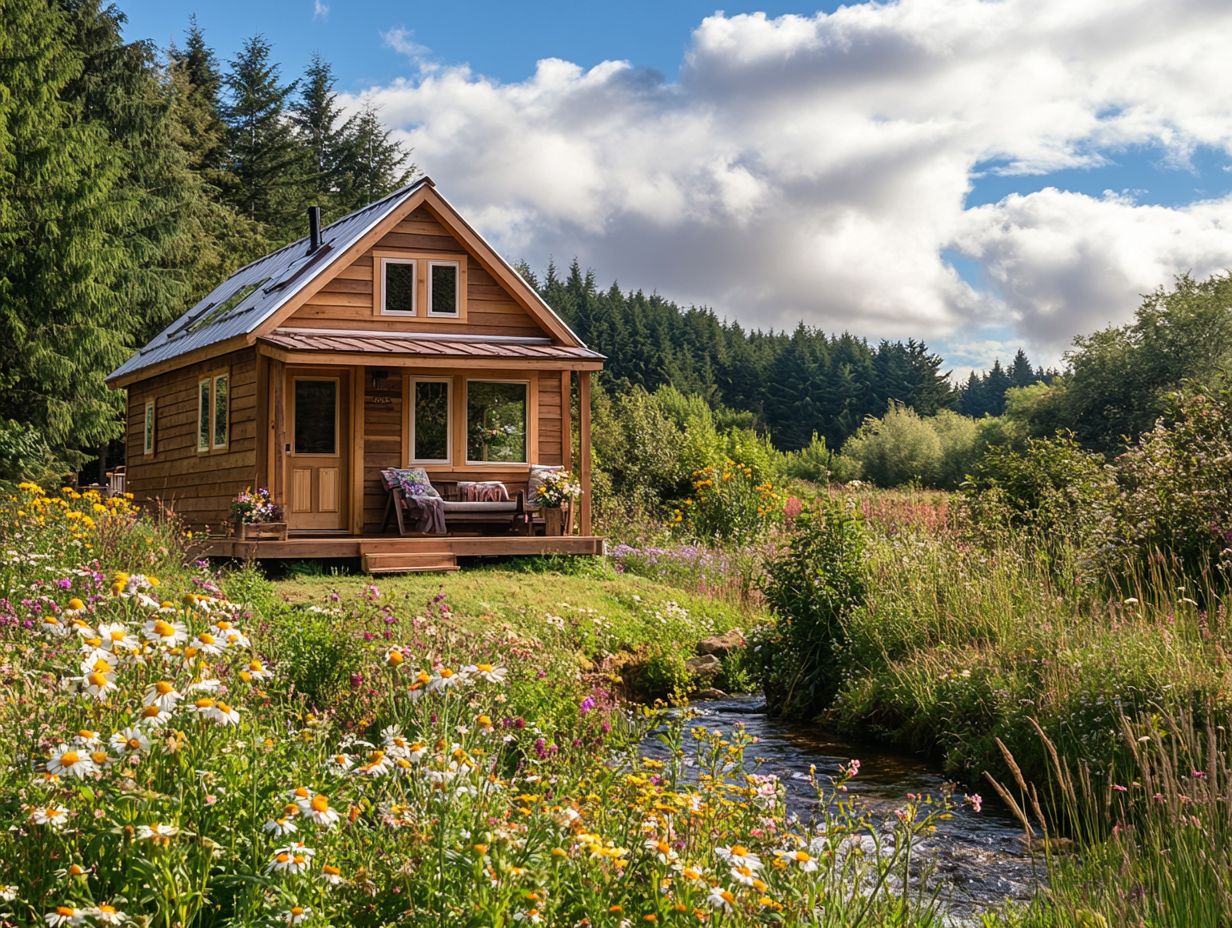
Access to utilities and essential services is a key factor to consider when choosing the best location for your tiny home. It directly impacts your quality of life and overall living experience, especially in regions like West Virginia and Louisiana.
In tiny house communities, residents typically enjoy shared resources like water, electricity, and waste management, all designed with sustainability in mind. However, if you re considering rural areas, you might face challenges in accessing these services, requiring careful planning.
As a homeowner in more isolated locales, you’ll need to navigate local regulations that can significantly affect your ability to connect to essential utilities. Understanding zoning laws and permits is essential; that picturesque spot might lack the infrastructure you need.
It s prudent to explore alternative energy sources such as solar panels or rainwater collection systems to ensure your needs are met sustainably. Balancing these factors is crucial for creating a comfortable living space that aligns with your lifestyle aspirations while meeting regulatory requirements.
Take the time to research local regulations and plan your tiny house journey effectively!
Popular Locations for Tiny Homes
Imagine living in a tiny home! They re captivating, offering a unique lifestyle in various locations, from rural havens to bustling urban centers. Each location presents its own set of advantages and challenges.
In states like Maine and Wisconsin, expansive rural landscapes provide ample opportunities for tiny home communities. These areas foster a lifestyle that embraces nature and simplicity.
On the flip side, urban environments like New York and New Jersey are embracing tiny home living for its clever use of space and innovative design solutions.
The allure of off-grid living is growing, appealing to those who desire independence from traditional utilities, especially in states like North Dakota and Iowa.
Rural Areas
Rural areas are becoming increasingly appealing for setting up tiny homes. They offer expansive landscapes and welcoming communities that embrace minimal living.
States like Arkansas and Alabama boast relaxed building codes that favor sustainable living solutions. This environment allows you to cultivate a strong sense of community while enjoying the tranquility of countryside life.
In these peaceful settings, you ll find larger plots of land available at affordable prices. Don t miss your chance to create your dream eco-friendly space that truly reflects your values.
These close-knit communities often provide robust support systems, where neighbors come together for shared activities, fostering friendships and collaboration.
Tiny home communities in rural areas promote an active lifestyle. They encourage outdoor adventures and participation in local farming initiatives. Reduced noise and pollution levels enhance your quality of life, making rural living an attractive option for those seeking simplicity and a deeper connection with nature.
Urban Areas
Urban areas offer an exhilarating opportunity to embrace tiny home living. They seamlessly blend modern convenience with innovative design solutions.
Cities like San Francisco and Austin are welcoming tiny homes as a legitimate housing alternative. However, you may encounter building restrictions that could present challenges.
Understanding home insurance policies tailored to tiny homes is crucial as you navigate urban living.
These legal obstacles often center around zoning laws that dictate where your tiny home can be situated. In cities like Portland, tiny home villages have emerged, showcasing how communal living can deliver both affordability and a vibrant sense of community.
Initiatives in Los Angeles are transforming underutilized lots into clusters of tiny homes, addressing the housing crisis while championing sustainable living. These examples not only showcase innovative solutions but also reflect the increasing acceptance of tiny homes in urban settings.
Ultimately, this shift is steering the housing market toward more flexible and diverse options for individuals like you.
Off-Grid Living
Off-grid living presents a unique and sustainable lifestyle for those seeking independence from traditional utilities. It s becoming an increasingly attractive option for tiny home enthusiasts.
By harnessing renewable resources such as solar energy and rainwater collection, your tiny home can significantly reduce its impact on the environment while keeping costs manageable. Research local regulations today to ensure compliance and feasibility.
Exploring innovative techniques like composting toilets and biomass heating can further enhance your sustainability. These methods allow you to rely minimally on external resources.
While the initial investment in off-grid setups can vary and may require a deeper financial commitment upfront, these costs are often offset by long-term savings on utility bills.
Navigating the intricate legal landscape surrounding zoning, building codes, and utility connections is essential. Different states impose varying regulations, so understanding these factors empowers you to make informed decisions.
This knowledge also fosters a sense of community among those who embrace a more autonomous lifestyle.
Tips for Finding the Perfect Location
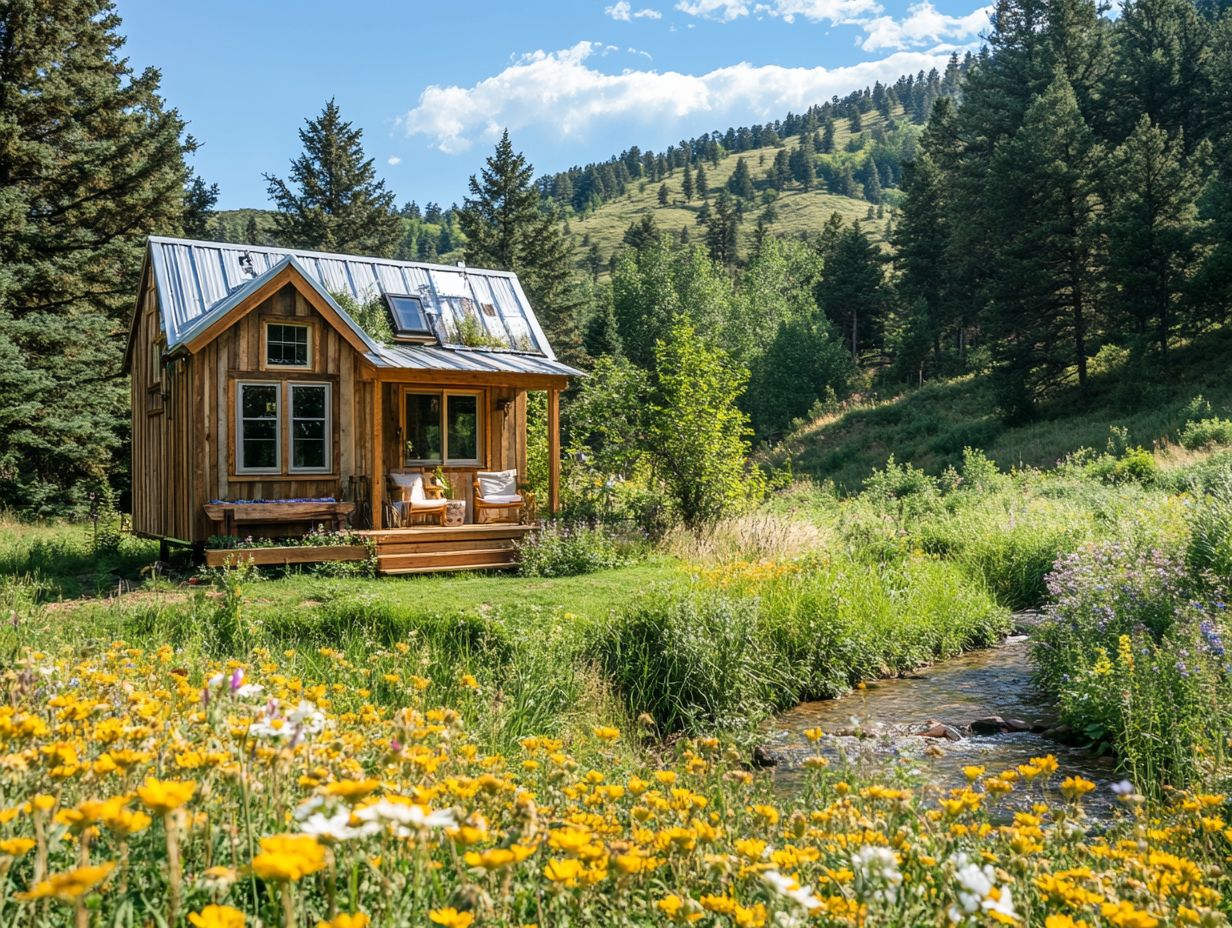
Finding the ideal location for your tiny house requires thoughtful research and consideration of several factors that influence your living experience and personal finances. Start by researching local regulations, including zoning laws and building codes in your desired area. This understanding will be instrumental in guiding your decision-making process.
Explore tiny house financing options and engage with established tiny house communities for invaluable insights and support, empowering you to make a well-informed choice.
Researching Local Regulations
Researching local regulations is an essential step on your tiny home journey. Zoning laws, which are the rules that determine how land can be used, and building codes can greatly influence your choice of location. Each state has its own quirks; for instance, North Dakota and New Jersey often have more lenient regulations that make tiny house living much easier.
By understanding these local laws, you can explore financing options and assess any potential building restrictions. Tap into resources like local planning departments or online databases to gain insights into what s allowed in your desired area. This helps you stay compliant with safety standards and saves you from costly fines or the need for last-minute modifications.
Being aware of building codes impacts your funding decisions, as certain lenders may have specific requirements tied to your home s compliance with local regulations. This detail becomes crucial if you re looking to secure loans or grants designed for small housing, making thorough research an essential part of your tiny home experience.
Considering Your Lifestyle and Needs
Considering your lifestyle and needs is crucial when searching for the perfect location for your tiny house. It directly influences your overall happiness and experience of tiny house living. Take a moment to evaluate your personal finance goals and how they align with the costs associated with tiny homes. This sets you up for a joyful and sustainable life.
Choosing a community that fosters social connections greatly boosts your joy. Assess local amenities such as parks, shops, and cultural hubs that resonate with your interests.
Consider your daily commute and the time spent traveling to work. Living close to your job can significantly reduce stress and improve your work-life balance. By integrating these factors, you can craft a harmonious environment that not only supports your financial goals but also enriches your overall lifestyle experience.
Consulting with Experts and Other Tiny House Owners
Consulting with experts and fellow tiny house owners can offer invaluable insights and guidance as you embark on your tiny house journey. Engaging with established tiny house communities, whether online or in-person, enables you to share experiences and learn best practices that can be transformative.
Seek expert advice on financing options and personal finance, empowering you to make informed decisions about your living situation.
Building relationships within these networks unlocks shared resources and cultivates a sense of belonging among like-minded individuals. This supportive environment is particularly beneficial when facing the challenges of downsizing or simplifying your life.
By connecting with those who have successfully transitioned to tiny living, you gain access to a treasure trove of knowledge regarding construction techniques, zoning regulations, and sustainable living practices. This collective wisdom can elevate your own tiny house project.
The collaborative spirit within these communities inspires innovation, encourages sustainable practices, and fortifies your commitment to embracing a lifestyle that truly reflects your values.
Frequently Asked Questions
What is the best location for a tiny house?
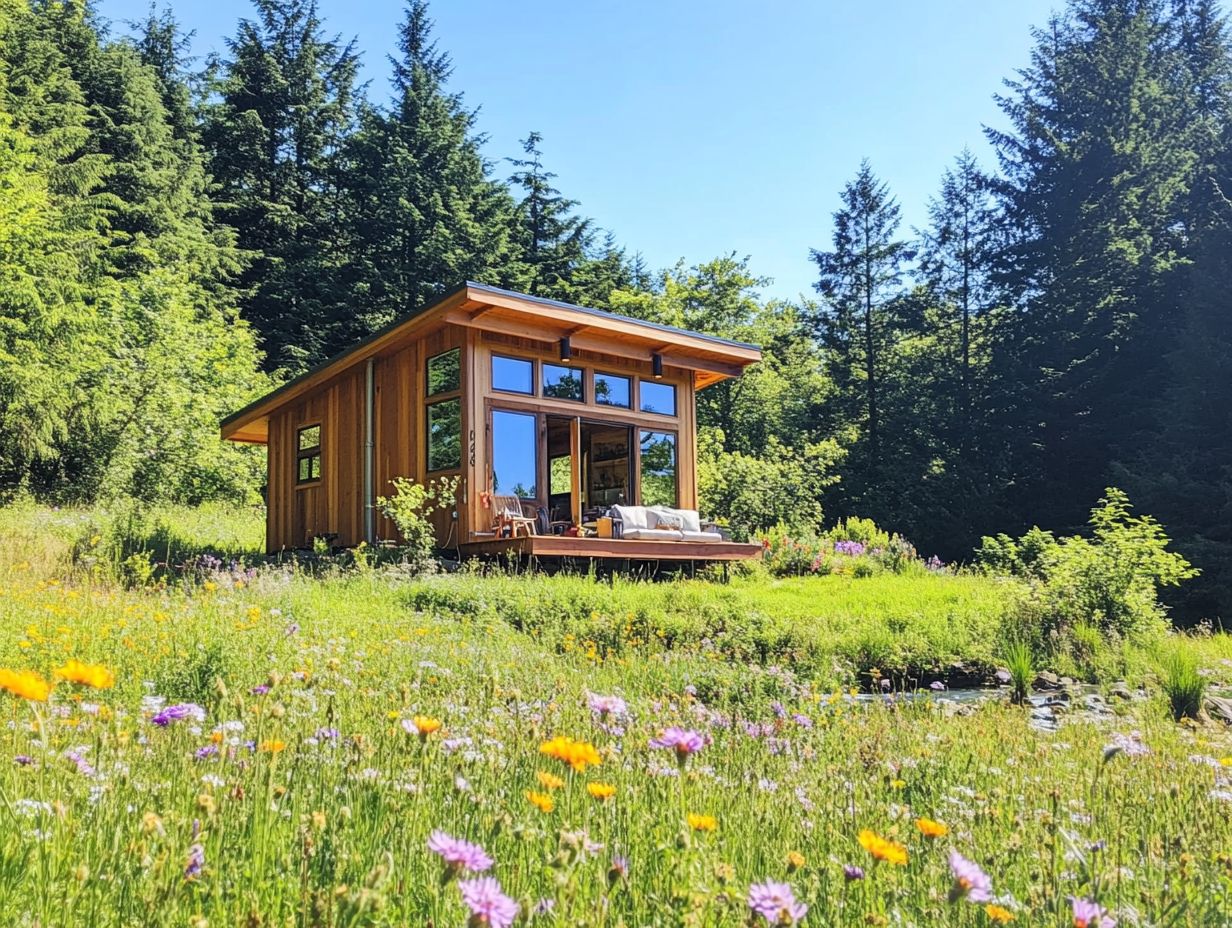
The best location for a tiny house depends on your needs and preferences. Consider factors like local laws, weather, and your lifestyle.
Can I park my tiny house on a residential property?
Yes, you can park your tiny house on a residential property if it meets local laws. Research these regulations and consult with authorities before deciding.
What are the zoning laws and regulations for tiny houses?
Zoning laws dictate how land can be used and can vary by location. Some areas have specific tiny house guidelines, while others might not have any rules.
Is it possible to have a tiny house in an urban area?
Yes, you can have a tiny house in an urban area! However, you need to check local laws for any restrictions. Be aware of challenges like limited space and higher costs.
What are the pros and cons of living in a tiny house in a rural area?
Living in a tiny house in a rural area has pros like lower costs and a closer connection to nature. However, you might face limited access to amenities and potential zoning challenges.
Can I have a tiny house on wheels in a tiny house community?
Absolutely! Many tiny house communities cater specifically to tiny houses on wheels. This option offers a chance to connect with like-minded individuals and share resources.

